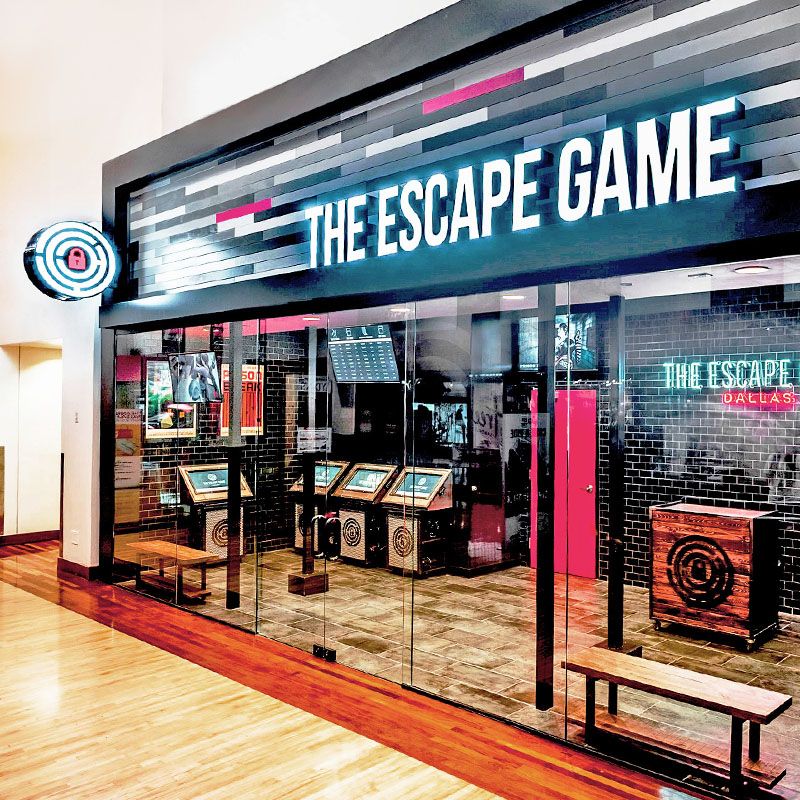Group Approaches: Just How to Collaborate Successfully in an Escape Space
Groups have to actively listen to each member's understandings, assign functions that straighten with private staminas, and maintain regular check-ins to ensure focus and avoid redundancy. By fostering an environment that values cohesion and versatility, teams can significantly increase their efficiency and success rates.
Establish Clear Interaction

To help with clear interaction, it is necessary to mark a central factor of get in touch with for details dissemination. Brief, focused updates from each group member can keep the group notified without overwhelming them with information.

Appoint Roles Purposefully
While clear communication sets the structure for effective teamwork, designating functions tactically ensures that each staff member's staminas are made use of properly. In a retreat space circumstance, the time-sensitive and intricate nature of challenges demands an efficient method to task delegation. By determining and leveraging specific proficiencies, teams can optimize their problem-solving abilities and improve total efficiency.
A person with an eager eye for information might succeed in discovering hidden items, while a sensible thinker can be better suited to addressing challenges. This function typically requires solid organizational and social skills.
Second, guarantee that functions are adaptable and versatile. As brand-new difficulties emerge, the team must have the ability to pivot, reapportioning jobs as called for. This adaptability helps preserve energy and avoids bottlenecks that might happen due to rigid function projects.
Inevitably, a critical technique to role project not only makes best use of the staminas of each staff member however additionally cultivates a cohesive setting, driving the team in the direction of a successful escape.
Use Diverse Abilities
Acknowledging and utilizing the diverse abilities within your team can considerably raise your efficiency in an escape space. Each team participant brings special staminas to the table, and effectively leveraging these capacities can accelerate analytic and improve general effectiveness. For instance, a group member with strong logical abilities might succeed at deciphering complex codes or patterns, while another with eager empirical capacities might quickly detect hidden hints that others might forget.
Urge group members to voice their insights and ideas without delay, making certain that all prospective remedies are taken into consideration. Furthermore, designating tasks that line up with each member's strengths can stop traffic jams and guarantee that progress is continuous.
In addition, variety in abilities often translates to diversity in believing styles, which is indispensable in an escape space setup. While some difficulties may need rational reasoning and precision, others might profit from creative and association of ideas. By identifying and leveraging this variety, teams can resolve a more site link comprehensive range of difficulties better, thus enhancing their possibilities of an effective retreat.
Manage Time Successfully

First, allot first mins for a quick study of the space. Recognize visible challenges and separate tasks based on staff member' toughness, guaranteeing that nobody is still. Establish interior time checkpoints to examine progression periodically; for circumstances, goal to have half the puzzles fixed by the mid-point of the video game. This practice can help keep the team concentrated and prevent time from escaping undetected.
In addition, avoid one-track mind. If a problem is taking as well long, rotate group participants or go on to an additional obstacle, returning later on with fresh viewpoints. Interaction is paramount-- maintain everybody updated on solved challenges and remaining tasks to avoid repetitive efforts.
Lastly, use any tips or clues sparingly but strategically - best escape room. Knowing when to ask for aid can save valuable time. By adhering to these time management concepts, teams can significantly boost their chances of a successful and delightful retreat area experience
Debrief and Reflect
Reflection is an important element of team development and improvement in the context of escape spaces. As soon as the obstacle is completed, whether effectively or otherwise, it is vital for the team to take part in an organized debriefing session. This procedure enables staff member to evaluate their efficiency, identify strengths, and determine locations for improvement.
Begin the debrief by reviewing what went well. Highlight certain circumstances of effective communication, analytical, and collaboration. Identifying these positive behaviors reinforces them and encourages their repeating in future challenges.
Review minutes of complication, miscommunication, or ineffective methods. Motivate an open and click to read more positive dialogue where group members can share their point of views without fear of objection.
Verdict
Finally, successful collaboration in a retreat area is based upon clear communication, strategic role assignments, the efficient utilization of varied skills, and competent time monitoring. Regular check-ins and structured debriefings are important for maintaining emphasis and cultivating constant renovation. By developing a natural and adaptive group setting, the possibility of efficiently solving challenges and attaining the purpose of leaving the space is dramatically enhanced. This strategy not only ensures success yet also navigate to this website advertises cumulative development and understanding.